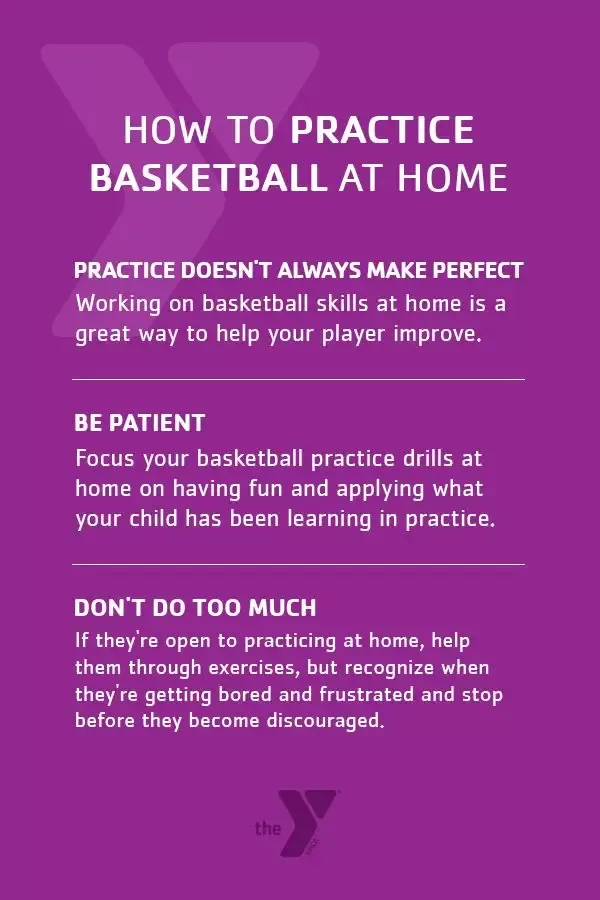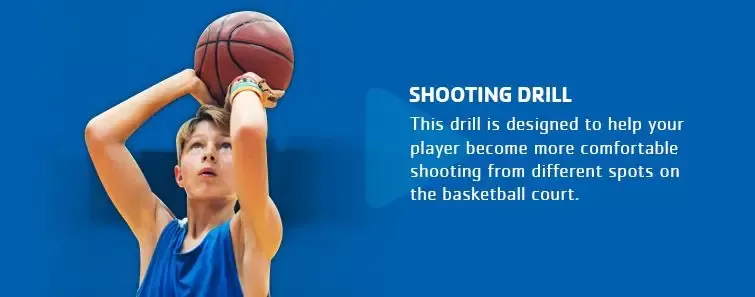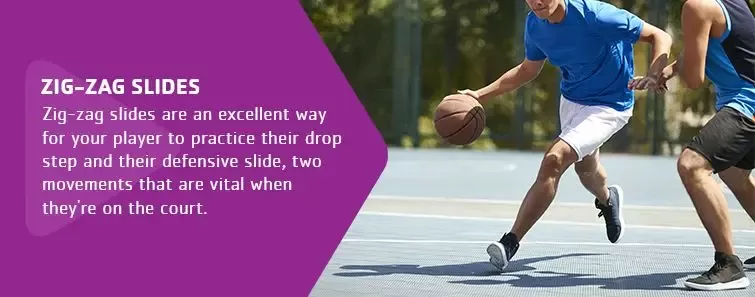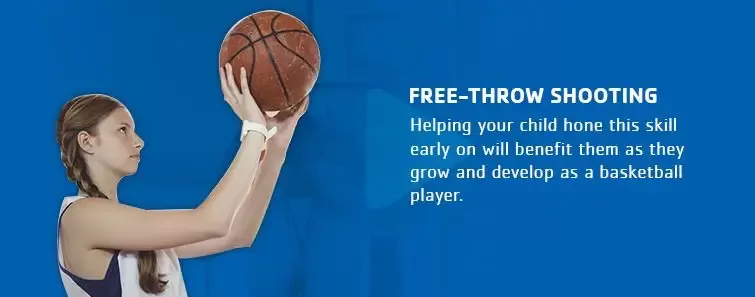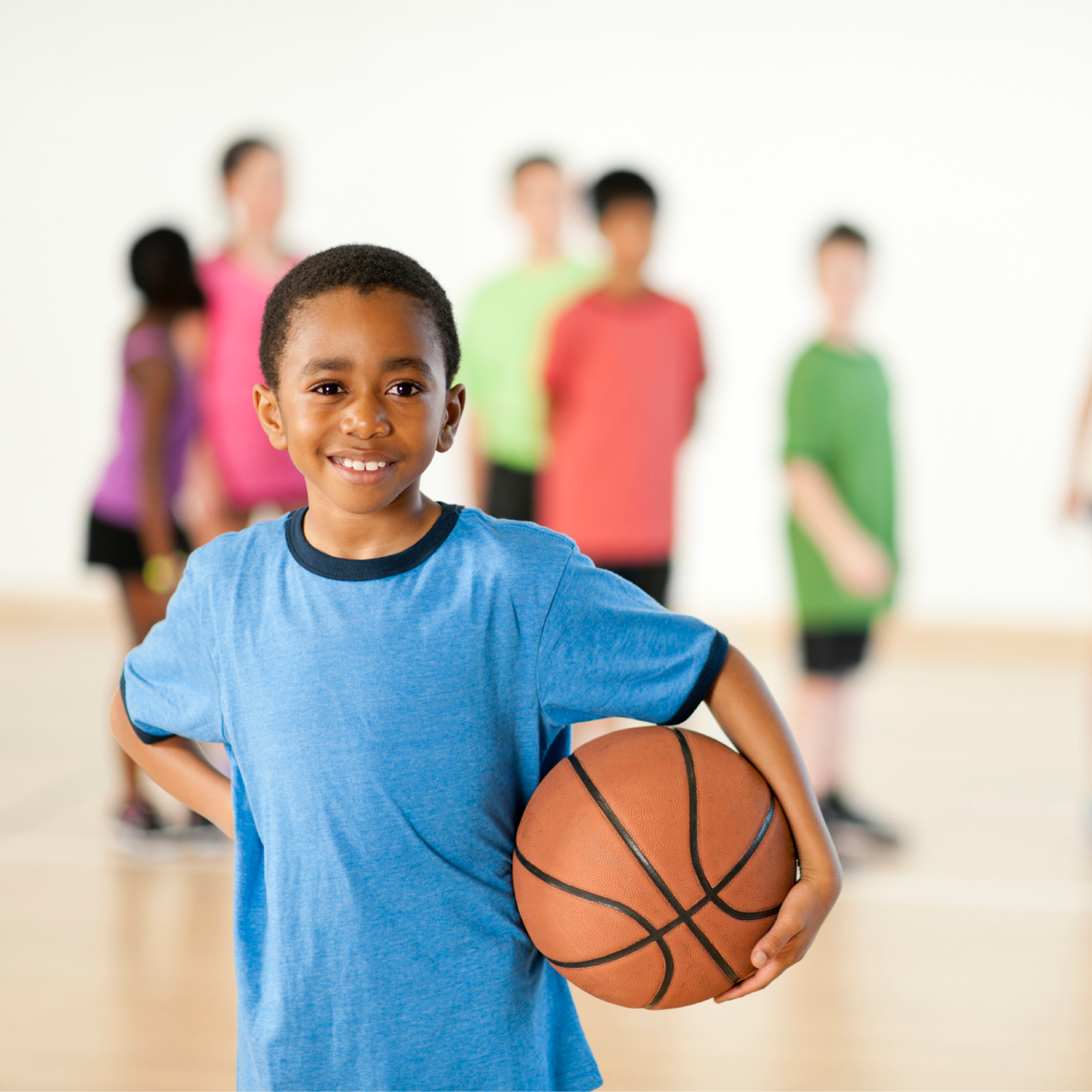
If you're raising an aspiring Steph Curry or LeBron James, you know firsthand formal basketball practices won't cut it for your child. Your driveway hoop is getting a lot of play, but you may reach a point where your child wants a little bit more guidance during their home hoops sessions. What better way to encourage your child's love of hoops than to help them find new ways to practice?
Team practices are typically the place to introduce young players to the fundamentals of the game, but home is where your child will hone those fundamentals. By encouraging your child to practice, you can help them develop these skills faster while spending time playing the game they love. And, by working with them as they develop their skills — and indulging their love of the game — you're strengthening your relationship with your child and enjoying time together.
The key to practicing basketball at home is to focus on drills that enhance or develop endurance, ball handling and shooting ability. Mental drills could be just as useful as the act of doing them. Proper technique is essential. Go outside, grab a basketball and get started!
How to Practice Basketball at Home
When it comes to practicing basketball at home, there are lots of ways to help your player develop their talent and indulge in their love of the game. And we'll share some of our favorite free basketball drills for kids with you later on in this post. But before that, there are a few things you should keep in mind when undertaking driveway basketball drills at home.
1. Practice Doesn't Always Make Perfect
Working on basketball skills at home is a great way to help your player improve, but it's not going to happen overnight. Remember, young children may not be developmentally ready to master specific skills — no matter how much they practice. Focus on encouraging their passion for the game and their confidence in their existing abilities. The self-assurance they build will be a key part of their future success in basketball and other sports.
2. Be Patient
Leave the coaching to your child's coach. Focus your basketball practice drills at home on having fun and applying what your child has been learning in practice. Avoid criticizing them or constantly pointing out their shortcomings. Instead, use the time together as quality time to play with your child. They will be more focused and more likely to pick up new skills when they feel like they're hanging out and playing with their mom or dad.
3. Don't Do Too Much
Remember, youth basketball is a hobby. Don't push your child to practice all the time or spend hours running drills at home. If they're open to practicing at home, help them through exercises, but recognize when they're getting bored and frustrated and stop before they become discouraged.
Drills aren't just for practice, although there are plenty of great ideas out there for free basketball drills for youth practice. If your child's interest in the game has them shooting hoops in the driveway or dribbling down the sidewalk, maybe it's time to encourage them to work on some of the fundamentals of the game at home.
The best thing about basketball is that you don't need a lot of equipment to practice. You can even find plenty of basketball drills without a hoop.All you'll need is:
- One or two basketballs
- Chalk or tape to mark lines that mimic a basketball court
- A hoop or other tall object — such as a tree or the side of your garage
- Plastic cones or other items — such as blocks or cans — you can use to mark for drills
Now that you have the equipment, it's time to get to work. Is your child ready for some drills to get better at basketball? Check out these simple basketball drills to do at home.
Cone Dribbling
Youth basketball cone drills are great for developing ball handling, especially teaching kids how to dribble with either hand. If your player is younger, some of their coordination and ability to dribble will come as they develop. But, for older children who are physically ready to master this skill, it can be an excellent way to work on ball control and build the muscles in both hands. It's also essential for them to work on dribbling without looking at the ball.
- Using a total of five cones or other items, place each one five feet apart in a straight line. Using one ball, instruct your player to dribble to the first cone at a moderate speed with the ball in their left hand. When they reach the first cone, have them do a left-to-right crossover, then proceed to the next cone.
- When they reach the next cone, have your player change it up and dribble with the right hand and do a right-to-left crossover. Repeat these steps for the remaining cones.
- Besides the crossover dribble, you can use different dribble moves such as a dribble crossover through the legs at each cone, behind-the-back dribble and an in-and-out dribble, which makes a player appear like they're going to change directions even if they don't.
One Ball-Two Ball Dribbling
The objective of this drill is to help your player keep their head up while dribbling, as well as practice keeping control of the basketball in when they're standing in one spot.
- Instruct your player to assume an athletic squat position and dribble the ball with their dominant hand first in a stationary spot for 30 seconds.
- Then, have your player switch the ball to their weaker hand to dribble the ball for 30 seconds.
- After mastering this drill using one ball, your player can then progress to using two basketballs, one in each hand. At this point, your player should assume a squat position with their head up and dribble one ball with each hand for 30 seconds. The objective is to dribble both balls simultaneously without looking at the ground or either of the balls.
- Once they have mastered dribbling in a stationary spot, progress with this drill to have them start moving around, dribbling in a straight line to a certain point and then dribbling back to the starting point — all without looking at the ground or the ball.
Shooting Drill
This drill is designed to help your player become more comfortable shooting from different spots on the basketball court. It's also a good way to help your player improve follow through by using their legs when they shoot. If you aren't on an actual basketball court, you can use chalk or tape to draw a half court on the driveway to help your player practice throwing from different angles.
- Using one basketball, stand to the right side near the basketball hoop or the tree or garage wall that's serving as your "hoop."
- Make five shot attempts using the backboard or the tall object you've selected. Instruct your player to stand at a proper angle so they can do this.
- After making five shots, instruct your player to expand to the midrange area on the right side and make five shot attempts. Then, move to the midrange area on the left side and throw five shots. Then, five more on the left side. In total, your player should throw five shots from each of the four different spots.
- After making five shots from the each of the four different spots, have your player finish the drill by attempting two free-throw shots.
Layup Drill
The purpose of this drill is to help your player figure out which leg to jump off when dribbling on the right and left side of a basketball hoop. Your job as you help them is to make sure they jump off the correct leg and finish with the correct hand. Developing form can be challenging, especially early on in their basketball experience, so practicing this is a great way to help them get comfortable with their form and their movements on the court.
- Beginning on the right side of your home "court," instruct your player to dribble the ball with their right hand and attempt a layup. They must do this while jumping off of their left leg and shooting with their right hand. It will be tempting for them to throw the ball as hard as they can, but their goal should be to softly lay up the ball using the square on the backboard.
- Now, moving to the left side of the "court," instruct your player to dribble up to the basketball hoop using their left hand. Then, they should jump off their right leg and finish with their left hand. This task may be more difficult because many players' left hands are their weaker hand. That makes practicing this drill even more essential so they can develop strength and coordination in both hands, making them stronger on all parts of the basketball court.
Zig-Zag Slides
A robust offense is fundamental to the game of basketball, but don't forget to spend some time working on defense too! Zig-zag slides are an excellent way for your player to practice their drop step and their defensive slide, two movements that are vital when they're on the court.
- Beginning in the corner of the court or driveway, instruct your player to slide from there to the high point.
- Employ a 90-degree drop step and then slide back to the opposite sideline.
- Continue the sequence of sliding and drop stepping until your player reaches the opposite baseline. Then, proceed down the opposite side of the court using the same pattern.
- Repeat this sequence.
Partner Passing
You've practiced shooting, dribbling and defense. Don't forget to spend some times on the basics of passing. After all, basketball is a team sport! We especially love this drill because it requires you to play with your child. Rather than just watching them practice, you get to be involved and spend some quality time together.
- Stand parallel to your player with a few feet between you to mimic the distance they will encounter between players during a game.
- Pass the ball back and forth, changing up the type of passing every one to two minutes — chest pass, bounce pass, one-handed push-pass.
- Stress the importance of targeted but soft passes. Work with your child to make sure they are passing hard enough to cover the distance, but soft enough that they aren't slamming the ball into your chest. Hard throws can be a source of injury on the basketball court — especially in youth basketball — so it's crucial for young players to develop control of the ball early on.
Free-Throw Shooting
Basketball teams win and lose games on free throws. Helping your child hone this skill early on will benefit them as they grow and develop as a basketball player. Even if you're practicing in your driveway, you can draw a free-throw line with sidewalk chalk. Since a high school free-throw line is typically 15 feet from the basket, mark this distance from your backboard.
- Instruct your player on proper free-throw form, by having them place their right foot just left of the center of the line — aka, the imaginary line between the basket and the free-throw line. If they're in the right spot, their arm and the ball should be lined up with the basket. They should square their shoulders and their left foot should be slightly back.
- Your player's legs are their source of power for this move. Bending slightly at the knees, they should come up on their toes and use their fingers to release the ball toward the basket. If your player is right-handed, have them use their left hand to slightly guide the ball forward. If they are left-handed, they should use their right hand as a guide.
- For younger players, start off practicing free throws closer to the hoop and gradually work up to shooting from the free-throw line.
Sign up for Youth Basketball at the YMCA
If your child is curious about basketball, the best way to help them explore their interest is to sign them up for youth basketball at the Gateway Region YMCA. What makes our program unique? You don't have to try out or demonstrate a talent to play on our teams. We guarantee everyone will get a chance to play and, during the season, your player will learn about all facets of the game of basketball. Our goal isn't to win games — although everyone loves to win! Instead, our goal is to help your child develop a lifelong love of sports and being active. We welcome players of all abilities from kindergarten to eighth grade.
Have a preschool-aged child who wants to try basketball? Our preschool youth basketball program offers a unique blend of instruction and play that introduces children ages 2-5 to the fundamentals of basketball and team sports.
You don't have to be a YMCA member to register for our youth basketball program, but a YMCA membership offers many benefits, including reduced sports registration fees. Along with reduced rates, your membership will allow you to participate in a variety of group fitness classes, access our workout facilities and take advantage of a wide range of youth development programs, including youth sports and swim classes. For more information, visit one of our branches or contact us at 314-436-1177.
